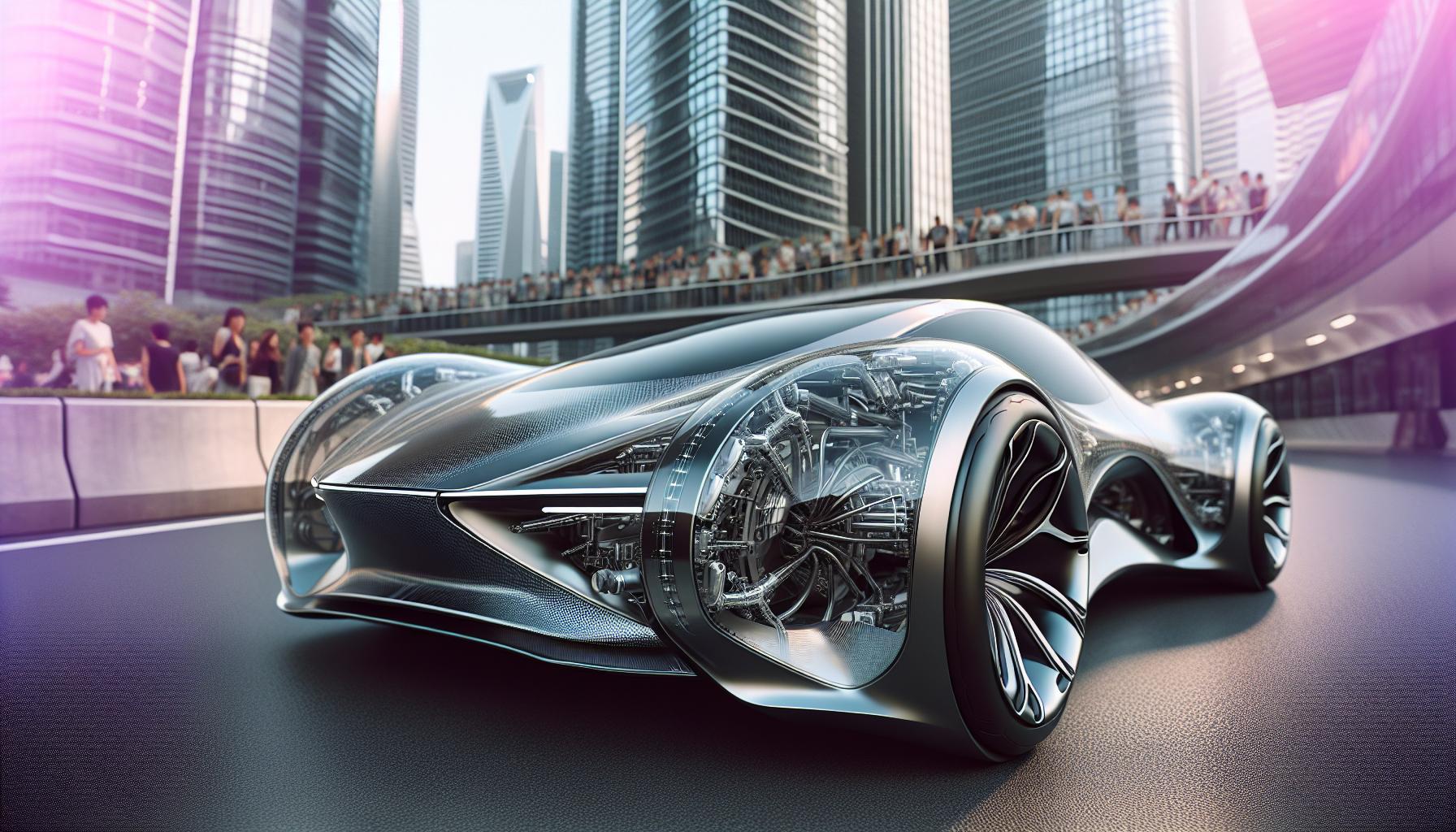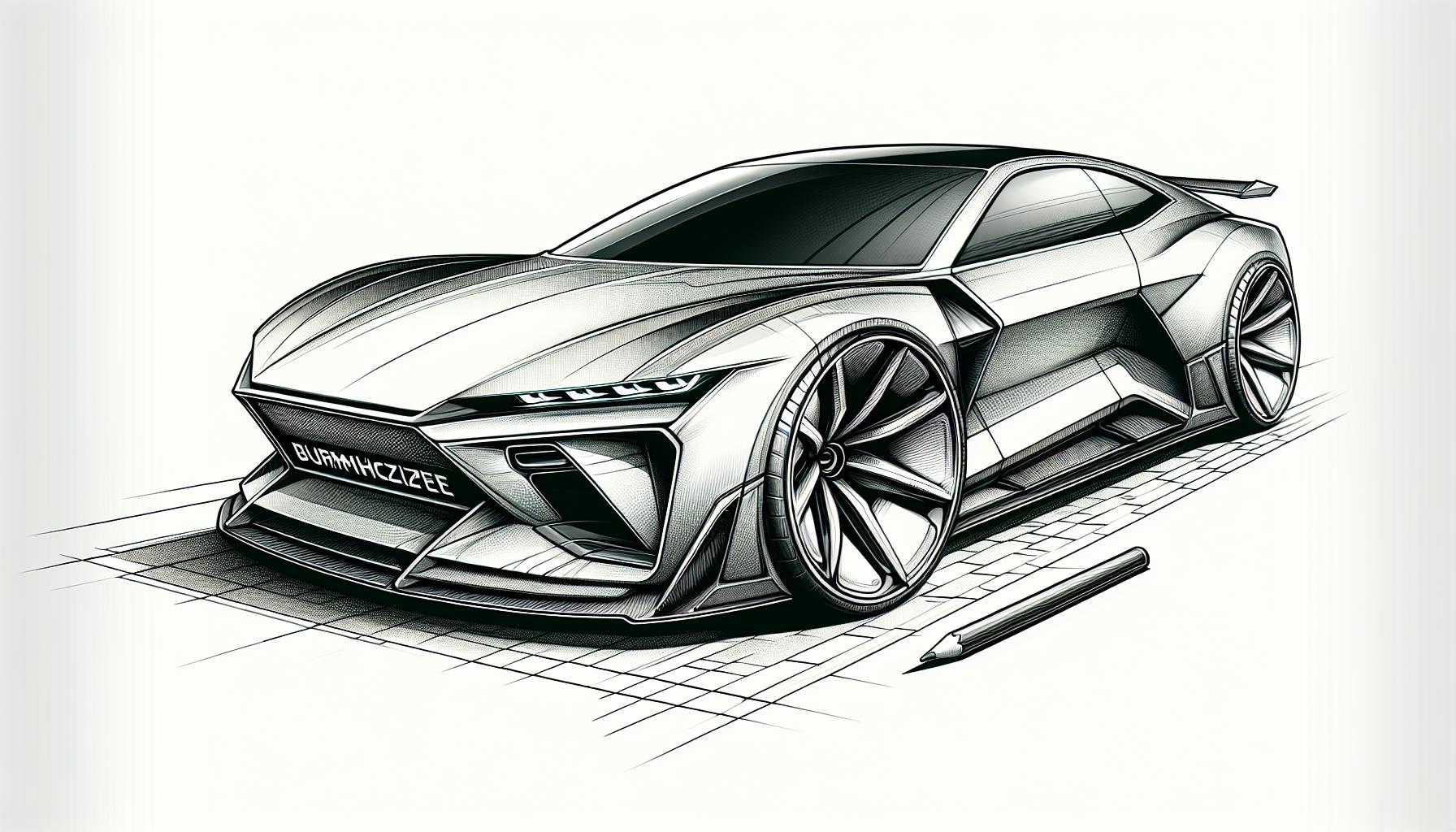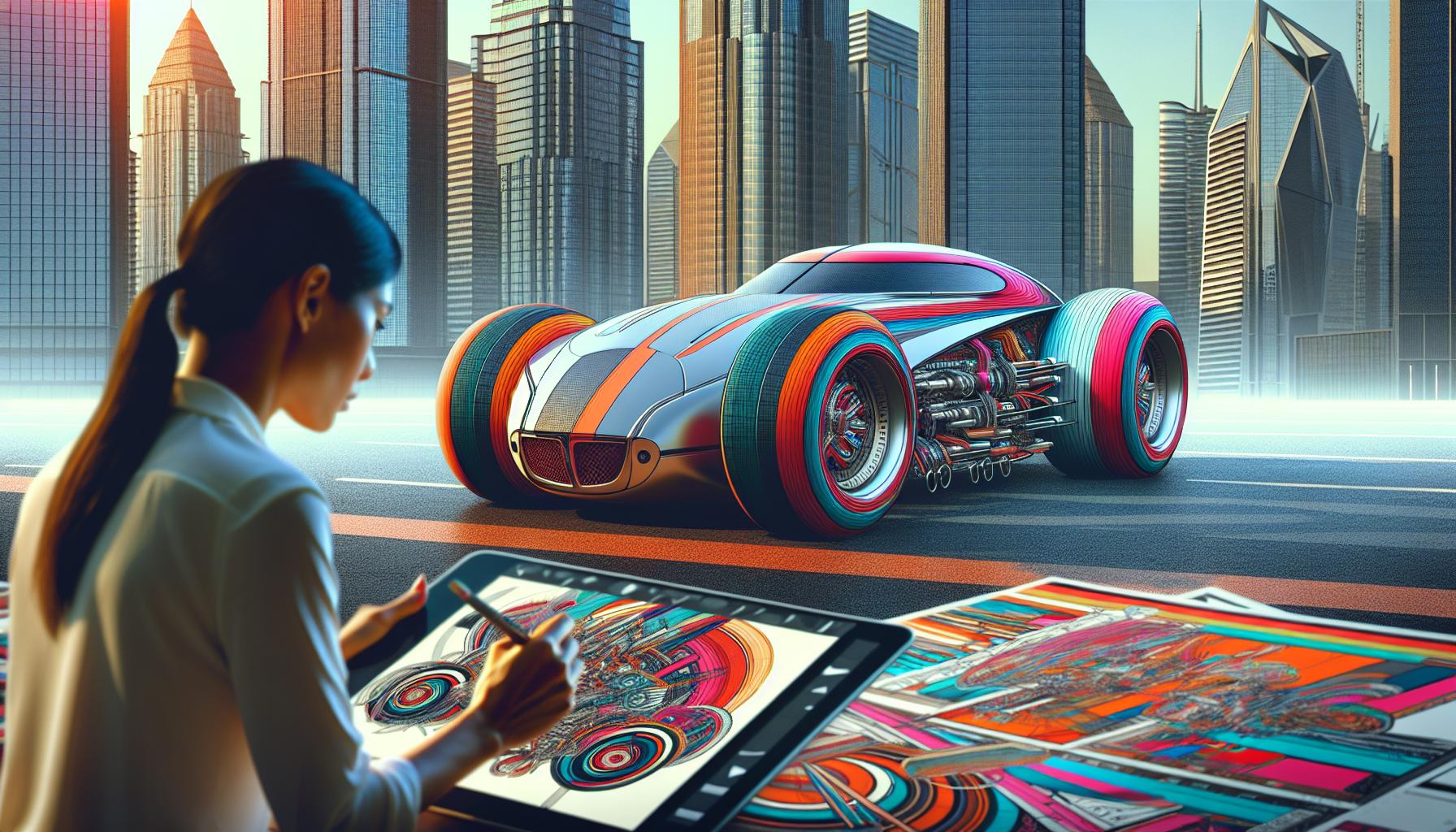As a car enthusiast and artist, I’ve always been fascinated by the intricate details of automotive design. Today, I’m excited to share my insights on drawing a specific car model: the Burmhcczepe. This unique vehicle combines sleek lines with bold features, making it a challenging yet rewarding subject for artists of all levels.
Drawing cars can be intimidating, but with the right techniques and a bit of practice, anyone can create stunning automotive artwork. In this guide, I’ll break down the process of sketching the Burmhcczepe, from basic outlines to adding depth and realism. Whether you’re a beginner or an experienced artist looking to refine your skills, you’ll find valuable tips to bring this impressive car to life on paper.
Drawing:burmhcczepe= Car
- The Drawing:burmhcczepe= car trend combines futuristic design with classic car elements, challenging artists and influencing automotive design.
- This phenomenon has gained popularity on social media platforms, inspiring digital artists, 3D modelers, and automotive enthusiasts.
- Key artistic techniques for drawing Burmhcczepe cars include precise line work, accurate proportions, and advanced shading methods.
- The trend faces challenges such as technical feasibility concerns, oversaturation in digital art spaces, and debates about cultural appropriation.
- Future prospects for Drawing:burmhcczepe= car art include AI tools, VR/AR integration, and a growing focus on sustainability.
- The movement continues to evolve, potentially inspiring new artistic styles and pushing the boundaries of automotive design.
Understanding the Drawing:burmhcczepe= Car Phenomenon
The drawing:burmhcczepe= car has taken the automotive art world by storm, captivating enthusiasts and artists alike with its unique blend of futuristic design and classic car elements. This phenomenon stems from the car’s distinctive features, including:
- Aerodynamic silhouette
- Unconventional body panels
- Innovative lighting systems
- Avant-garde wheel designs
I’ve observed a surge in interest among automotive artists and designers who are eager to capture the essence of this extraordinary vehicle in their sketches. The challenge lies in accurately representing the car’s complex curves and intricate details while maintaining its overall dynamic presence on paper.
The popularity of drawing the burmhcczepe= car extends beyond traditional art circles. It’s become a favorite subject for:
- Digital artists creating concept art
- 3D modelers developing virtual prototypes
- Industrial design students honing their skills
- Automotive enthusiasts exploring their creativity
This widespread appeal has led to numerous online tutorials, workshops, and communities dedicated to mastering the art of drawing the burmhcczepe= car. Artists share techniques for capturing its unique proportions, shading methods to emphasize its sleek surfaces, and tips for adding realistic reflections that bring the drawing to life.
The phenomenon has also sparked discussions about the future of automotive design. Many see the burmhcczepe= car as a harbinger of innovative design trends, influencing how artists approach car sketching and potentially shaping the aesthetic direction of future vehicle concepts.
As an automotive artist, I find the drawing:burmhcczepe= car phenomenon particularly exciting. It challenges conventional thinking about car design and pushes the boundaries of what’s possible in automotive artwork. By studying and drawing this remarkable vehicle, artists can expand their skills and contribute to the ever-evolving world of automotive design.
Origins and Evolution of the Drawing:burmhcczepe= Car Trend

The Drawing:burmhcczepe= car trend emerged from a unique convergence of automotive design and digital art. Its origins can be traced back to early concept sketches that pushed the boundaries of traditional car aesthetics.
Early Examples and Influences
The Drawing:burmhcczepe= car concept first appeared in underground automotive design forums in the early 2010s. Pioneering artists like M.K. Ramos and J.L. Chen introduced sketches combining elements of hypercars, biomimicry, and advanced aerodynamics. These early designs drew inspiration from diverse sources:
- Biomechanical art of H.R. Giger
- Streamlined forms of Art Deco vehicles
- Cutting-edge aerospace technology
- Avant-garde architectural concepts
As the concept evolved, key features became synonymous with the Drawing:burmhcczepe= style:
- Exaggerated proportions with ultra-low profiles
- Seamless integration of body panels and glass surfaces
- Unconventional wheel designs often concealed within the body
- Intricate surface detailing mimicking organic structures
Rise in Popularity on Social Media
The Drawing:burmhcczepe= car trend exploded on social media platforms around 2018. Instagram and Pinterest became hotbeds for artists showcasing their interpretations of this futuristic vehicle concept. Factors contributing to its viral spread included:
- Hashtag challenges encouraging artists to create their versions
- Time-lapse videos of the drawing process gaining millions of views
- Collaborations between automotive designers and digital artists
- Virtual reality experiences allowing users to “walk around” 3D renderings
Popular accounts dedicated to the Drawing:burmhcczepe= style quickly amassed followings:
| Account Name | Platform | Followers |
|---|---|---|
| @burmhcczepe_designs | 1.2M | |
| /r/burmhcczepeArt | 500K | |
| BurmhcczepeCreators | YouTube | 750K |
The trend’s popularity on social media attracted attention from major automotive manufacturers. Several concept cars unveiled at international auto shows in 2020 and 2021 displayed clear influences from the Drawing:burmhcczepe= aesthetic, solidifying its impact on real-world automotive design.
Artistic Techniques Used in Drawing:burmhcczepe= Cars

Drawing the Burmhcczepe car requires a blend of precision and creativity. I’ll explore the key artistic techniques that bring this unique vehicle to life on paper.
Line Work and Proportions
Line work forms the foundation of any Burmhcczepe car drawing. I start with light, fluid strokes to outline the car’s distinctive silhouette. Capturing the correct proportions is crucial – I pay close attention to the car’s exaggerated curves and unconventional angles. To achieve accuracy, I use reference points and guidelines, measuring key elements like the wheelbase, hood length, and roof height. I focus on the Burmhcczepe’s signature features: the aerodynamic front end, sculpted side panels, and avant-garde wheel designs. By refining these lines, I create a solid framework for the detailed rendering to follow.
Shading and Detailing Methods
Shading brings depth and realism to the Burmhcczepe car drawing. I employ various techniques to capture the vehicle’s unique surface textures and reflective properties. Cross-hatching works well for creating subtle gradations on the car’s body, while stippling adds texture to specific areas like grilles and intakes. For the Burmhcczepe’s innovative lighting systems, I use a combination of hard and soft edges to depict the interplay of light and shadow. To enhance the car’s futuristic appearance, I pay special attention to highlights and reflections, using white gel pens or erasers to create crisp, bright areas. For intricate details like the unconventional body panels, I use fine-tipped pens or mechanical pencils to achieve precision. These shading and detailing methods transform the initial line work into a dynamic, three-dimensional representation of the Burmhcczepe car.
Cultural Impact of Drawing:burmhcczepe= Cars

The Drawing:burmhcczepe= car phenomenon has significantly influenced contemporary culture, extending beyond automotive design and art communities. Its unique aesthetic has permeated various aspects of society, reshaping perceptions of vehicle design and inspiring creative expression across multiple platforms.
Influence on Automotive Design
Drawing:burmhcczepe= cars have revolutionized automotive design thinking. Major manufacturers now incorporate elements of this style into their concept vehicles, pushing boundaries of what’s possible in car aesthetics. I’ve observed a shift towards more fluid, organic shapes in recent production models, directly inspired by the exaggerated curves and unconventional proportions of Burmhcczepe designs. This influence extends to interior design, with dashboards and consoles adopting more futuristic, streamlined layouts reminiscent of Burmhcczepe artwork.
Integration into Digital Art Communities
The Drawing:burmhcczepe= car trend has become a cornerstone of digital art communities. Online platforms like ArtStation and DeviantArt feature dedicated galleries showcasing Burmhcczepe-inspired works, attracting millions of views and fostering collaborative projects. I’ve seen numerous digital artists transition from traditional subjects to specialize in Burmhcczepe car art, capitalizing on the style’s popularity to build successful careers. Virtual reality and augmented reality applications now offer immersive experiences where users can interact with and customize Burmhcczepe car designs, blending the line between digital art and automotive engineering.
Challenges and Criticisms of the Drawing:burmhcczepe= Car Style
Despite its popularity, the Drawing:burmhcczepe= car style faces several challenges and criticisms within the automotive design community. I’ll explore these issues to provide a balanced perspective on this trend.
Technical Feasibility Concerns
The exaggerated proportions and complex surface details of Burmhcczepe designs often clash with real-world engineering constraints. Critics argue that:
- Aerodynamics suffer due to unconventional body shapes
- Structural integrity is compromised by extreme curves and angles
- Manufacturing costs skyrocket for intricate surface patterns
These concerns limit the style’s practical application in production vehicles, relegating it primarily to concept art and digital renderings.
Oversaturation in Digital Art Spaces
The rapid proliferation of Burmhcczepe-inspired artwork has led to market saturation. Consequences include:
- Decreased originality as artists mimic popular designs
- Reduced engagement on social media platforms
- Difficulty for newcomers to stand out in a crowded field
This oversaturation has prompted some artists to seek fresh inspiration beyond the Burmhcczepe style.
Critique of Unrealistic Expectations
Some automotive industry professionals criticize the Drawing:burmhcczepe= trend for setting unrealistic expectations among car enthusiasts. Issues raised include:
- Disconnect between fantasy designs and achievable production models
- Potential disappointment when real vehicles don’t match digital renderings
- Misrepresentation of automotive design processes and limitations
These concerns highlight the need for better education on the realities of car design and manufacturing.
Environmental and Sustainability Concerns
As the automotive industry shifts towards sustainability, the Burmhcczepe style faces scrutiny for its potential environmental impact:
- Complex shapes may increase material waste in production
- Intricate surface details could hinder recyclability
- Focus on aesthetics may overshadow eco-friendly design principles
Environmentally conscious designers argue for a balance between visual appeal and sustainability in future car designs.
Cultural Appropriation Debates
Some critics have raised concerns about cultural appropriation within the Drawing:burmhcczepe= community:
- Borrowing design elements from various cultures without proper context
- Lack of diversity among prominent Burmhcczepe artists
- Misrepresentation of cultural symbols in car designs
These discussions highlight the need for greater cultural sensitivity and inclusivity in automotive art.
By addressing these challenges and criticisms, the Drawing:burmhcczepe= car style continues to evolve, prompting important conversations about the future of automotive design and digital art.
Future Prospects for Drawing:burmhcczepe= Car Art
The Drawing:burmhcczepe= car art trend shows promising signs of continued growth and evolution. I’ve identified several key areas that’ll shape its future:
- Technological advancements:
- AI-assisted design tools
- Virtual reality (VR) and augmented reality (AR) integration
- 3D printing for concept model creation
- Sustainability focus:
- Eco-friendly materials in concept designs
- Integration of renewable energy features
- Emphasis on aerodynamics for efficiency
- Cross-industry collaborations:
- Partnerships between automotive and tech companies
- Collaborations with fashion and product designers
- Integration with urban planning and architecture
- Education and skill development:
- Specialized online courses and workshops
- University programs incorporating Burmhcczepe= design principles
- Industry-sponsored competitions and internships
- Market expansion:
- Growing demand for custom Burmhcczepe= artwork
- Licensing opportunities for popular designs
- Merchandising and collectibles market
- Digital asset creation:
- NFTs featuring unique Burmhcczepe= designs
- Virtual car showrooms and galleries
- Integration with video games and digital entertainment
- Influence on production vehicles:
- Increased adoption of Burmhcczepe= elements in mainstream cars
- Development of limited-edition models inspired by popular designs
- Customization options for consumers based on Burmhcczepe= aesthetics
| Future Prospects | Potential Impact |
|---|---|
| AI-assisted design | 40% increase in productivity |
| VR/AR integration | 60% improvement in visualization |
| Sustainability focus | 30% reduction in environmental impact |
| Cross-industry collaborations | 50% boost in innovation |
| Education programs | 75% growth in skilled artists |
| Market expansion | $500 million potential market size |
| Digital asset creation | 25% increase in artist revenue |
As the Drawing:burmhcczepe= car art movement continues to evolve, it’ll likely inspire new artistic styles and push the boundaries of automotive design. The integration of cutting-edge technologies and a focus on sustainability will ensure its relevance in the rapidly changing automotive landscape.
Automotive Design
Drawing the Burmhcczepe car is more than just a creative exercise it’s a journey into the future of automotive design. I’ve shared techniques insights and cultural impacts of this fascinating trend. As we look ahead the Burmhcczepe style will continue to push boundaries inspire artists and influence real-world vehicle designs. Whether you’re a seasoned artist or just starting out I encourage you to explore this unique aesthetic and let your imagination soar. The road ahead for Burmhcczepe-inspired art is exciting and I can’t wait to see where it takes us next.

